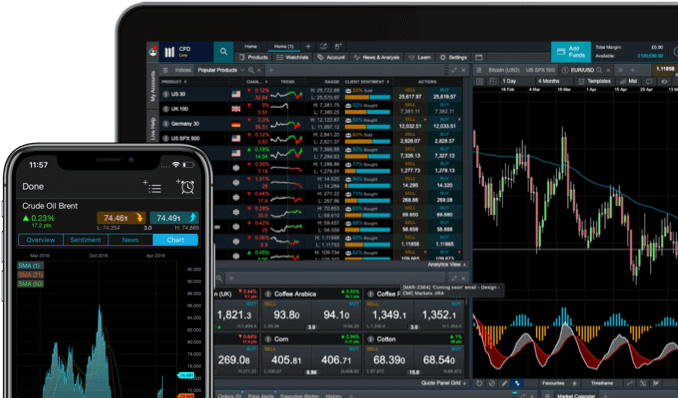Holding rates for cash commodity and treasury CFDs are based on the inferred holding costs built into the underlying futures contracts, from which the prices of our cash commodity and treasury products are derived. A cash price is a product without a fixed expiry or settlement date. The price of our cash commodity and treasury products strips out this inferred holding cost (as described above) to create our continuous 'cash' price. The inferred daily holding cost is then applied as our holding cost, which can be positive or negative.
Our cash commodities and treasuries enable you to trade on a continuous price which, unlike forward commodities or treasuries, is not subject to an expiration date.
Using the underlying futures price data as a basis, our automated pricing engine calculates theoretical cash prices for each cash commodity and treasury by adding or subtracting (as applicable) the implied holding cost. Using these theoretical cash prices as a basis, our automated pricing engine derives price depth ladders containing up to ten levels of depth for each cash commodity and treasury. Each level transparently displays the volume obtainable at a distinct price, with the volume and applicable spread increasing as you go further down the ladder.
The implied holding cost, plus or minus a premium, is then applied daily to positions held at 5pm (New York time) as a daily holding cost amount.
The price of our cash product is based on the nearest most liquid futures contract, or primary contract, so over time as the underlying futures approach expiry the primary contract will change, which generally coincides with the roll dates of our forward instruments.
Before each change in the primary contract the implied holding cost rate is calculated, and fixed, measuring the difference between the mid-price of the 'next' primary contract and the mid-price of our current cash price. Each time we update our primary contract, the holding cost rate is recalculated to reflect this change.
In exceptional circumstances, our cash price may not be based on the discounted price of the front month future, but a further dated expiry due to conditions in the underlying commodity market.





